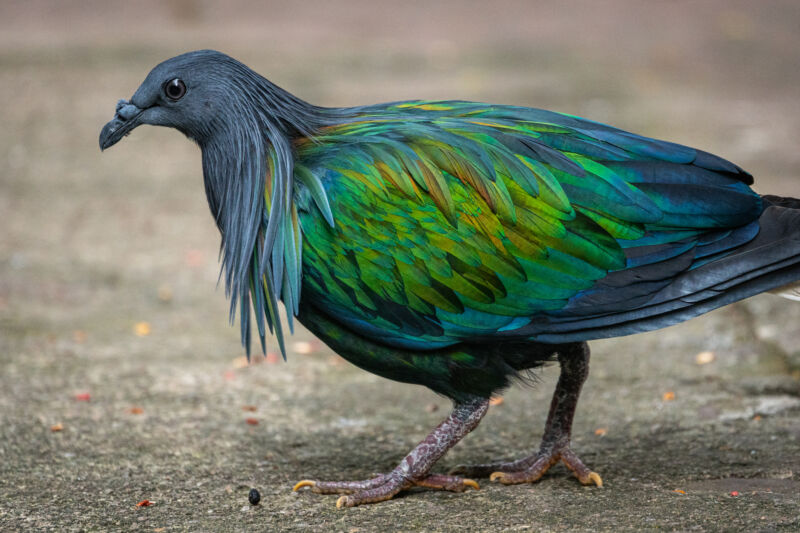The next de-extinction target: The dodo

Enlarge / The Nicobar pigeon, the dodo's closest living relative, is quite a bit smaller and capable of flight. (credit: Samuel Hambly / EyeEm)
Colossal is a company that got its start with a splashy announcement about plans to do something that many scientists consider impossible with current technology, all in the service of creating a product with no clear market potential: the woolly mammoth. Since that time, the company has settled into a potentially viable business model and set its sights on a species where the biology is far more favorable: the thylacine, a marsupial predator that went extinct in the early 1900s.
Today, the company is announcing a third de-extinction target and its return to the realm of awkward reproductive biology that will force the project to clear many technical hurdles: It hopes to bring back the dodo.
A shifting symbolThe dodo was a large (up to 1 meter tall), flightless bird that evolved on the island of Mauritius in the Indian Ocean. As European sailors reached the islands, it quickly became a source of food for them and the invasive species that accompanied them. It went extinct within a century of the first descriptions reaching Europe.